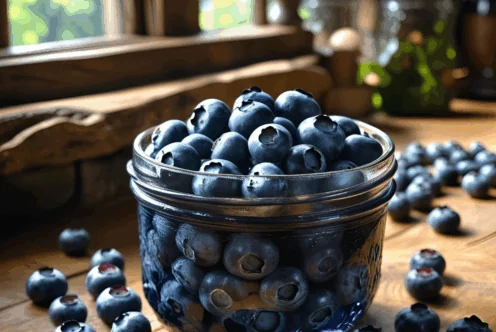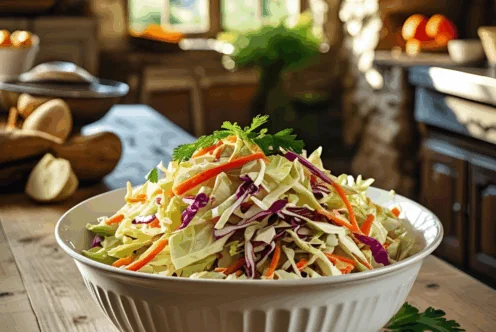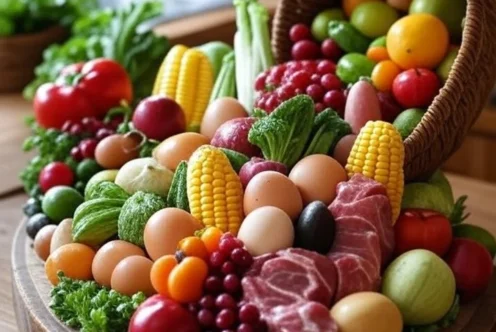Blog
Slow Aging From the Inside Out

As people age, the quest for youthfulness often leads them to a myriad of creams, lotions, and supplements claiming to slow down the aging process. However, there is a growing body of evidence suggesting that the key to a longer, healthier life—and maintaining a youthful appearance—may begin with what we eat. Certain foods, rich in specific natural compounds, have shown remarkable potential in promoting longevity and youth from the inside out. One of the most fascinating groups of these compounds is called polyphenols.
Understanding Polyphenols
Polyphenols are naturally occurring compounds found in plants that are known for their antioxidant properties and numerous health benefits. They help combat oxidative stress and inflammation, both of which are associated with aging and chronic diseases. According to recent research, polyphenols may play a crucial role in promoting health, longevity, and youthful vigor by acting at a cellular and molecular level. Ranging in number from 8,000 to over 10,000, these compounds contribute to the color, flavor, and disease resistance of plants.
They are known for a variety of benefits, such as:
- Slow Aging: Polyphenols have been shown to slow brain aging, improve cognitive function, and promote better heart health.
- Boosting the Immune System: These compounds enhance the immune response, thereby helping prevent infections and diseases.
- Anti-Inflammatory Effects: Chronic inflammation is a hallmark of aging, and polyphenols help mitigate this through their anti-inflammatory properties.
- Lowering Blood Pressure and Cholesterol: Regular consumption of polyphenol-rich foods can positively impact cardiovascular health.

The Science Behind Polyphenols
Research has increasingly highlighted the importance of polyphenols. A study published in the journal Frontiers in Nutrition indicates that polyphenols can induce favorable changes in gut microbiota, leading to improved metabolic health. This is significant since the gut microbiome plays a crucial role in overall health and aging.
Another study published in Nature Reviews emphasizes that polyphenols can activate certain cellular pathways, such as sirtuins and AMPK, which are known to promote longevity and cellular repair. These pathways are generally associated with caloric restriction, which has been shown to extend lifespan in various organisms.
Food Sources of Polyphenols
Incorporating polyphenol-rich foods into your diet is an effective way to harness their anti-aging properties. Below are some categories of foods packed with polyphenols that can easily fit into your daily meals:
1. Fruits
Fruits are a primary source of polyphenols and should be a staple in any diet aimed at promoting longevity. Here are some top choices:
- Berries: Blueberries, strawberries, and blackberries are particularly rich in anthocyanins, a type of polyphenol that has been linked to cognitive benefits and improved heart health. Studies have shown that berry consumption is associated with a reduced risk of cognitive decline.
- Apples: Containing a high amount of quercetin, apples have been linked to anti-inflammatory effects and improved cardiovascular health. Moreover, they are an excellent source of fiber, which benefits digestive health.
- Grapes: Grapes, particularly red and black varieties, are packed with resveratrol. Resveratrol has garnered attention for its potential to mimic the effects of caloric restriction and promote longevity.
For more detailed information on the health benefits of berries, you can refer to Healthline’s guide.
2. Vegetables
Vegetables are another rich source of polyphenols. Incorporating a variety of them can significantly enhance your polyphenol intake:
- Artichokes: Artichokes are one of the vegetables highest in antioxidants and polyphenols, particularly in a group known as cynarins. These compounds have been linked to liver health and digestive benefits.
- Spinach: This leafy green is packed with flavonoids and has been associated with a decrease in inflammation and improved brain function.
- Onions: Onions are rich in quercetin, which can help reduce blood pressure and improve overall heart health.
3. Nuts and Seeds
These food sources are not only high in healthy fats but also abundant in polyphenols:
- Walnuts: Walnuts are rich in ellagitannins, a type of polyphenol that has been shown to have anti-cancer properties and improve heart health.
- Flaxseeds: An excellent source of lignans, flaxseeds have antioxidant properties and are known for supporting hormonal balance and heart health.
4. Beverages
Certain beverages are also rich in polyphenols:
- Green Tea: One of the richest sources of polyphenols, green tea is packed with catechins, which can help reduce the risk of cardiovascular diseases and support weight management.
- Coffee: Surprisingly, coffee is one of the largest sources of antioxidants in the diet. It contains chlorogenic acid, a powerful polyphenol that may help lower the risk of chronic diseases.
To dive deeper into the benefits of tea and coffee, you can visit Harvard Health.
The Significance of a Varied Diet
According to registered dietitian-nutritionist Amy Chamberlain, the best way to reap the health benefits of polyphenols is to consume a wide variety of fruits and vegetables. Diversity in your diet ensures that you are getting a broad spectrum of polyphenols and their corresponding health benefits. While some might turn to polyphenol supplements, studies suggest that whole foods are more beneficial due to the complex interactions of various nutrients.
Practical Tips for Incorporating Polyphenols
- Start Your Day with Berries: Add a handful of blueberries to your morning yogurt or oatmeal.
- Snack on Nuts: Opt for a small handful of walnuts or almonds instead of processed snacks to boost your polyphenol intake.
- Switch Up Your Beverages: Replace sugary drinks with green tea or enjoy a cup of coffee throughout the day.
- Explore New Vegetables: Go beyond the basics—try artichokes, kale, and different varieties of colorful peppers.
- Experiment with Spices: Incorporate spices such as cloves, peppermint, and cinnamon into your meals. They are potent sources of polyphenols.
Local Sources of Polyphenol-Rich Foods
If you’re in Arizona, you have access to a wealth of fruits and vegetables grown locally. The state’s agricultural landscape produces a variety of produce, including:
- Citrus Fruits: Oranges, lemons, and grapefruits are not only delicious but also rich in vitamin C and polyphenols.
- Local Vegetables: Arizona-grown heirloom tomatoes, peppers, and leafy greens can be easily found at farmer’s markets throughout the state.
- Seasonal Berries: Although berries are generally associated with colder climates, some farms in Arizona grow strawberries, offering a fresh local option.
Visiting your local grocery store or farmers’ markets can help you discover fresh produce that is high in polyphenols.
Conclusion
In conclusion, the pursuit of maintaining a youthful appearance and promoting longevity can be significantly aided by embracing a diet rich in polyphenols. These powerful compounds, found abundantly in fruits, vegetables, nuts, seeds, and certain beverages, not only support your health at the cellular level but also work synergistically with other nutrients to combat aging and disease.
While topical creams and supplements may promise benefits, achieving the most effective and cost-efficient results often lies in the food we consume. By diversifying your dietary choices and including as many polyphenol-rich foods as possible, you can actively participate in your health journey and take steps towards aging gracefully.
For more insightful health-related articles and studies, consider checking out the Fill Your Plate blog. Your journey to a healthier, longer, and more vibrant life can begin with the simple choice of what’s on your plate!
By Heide Kennedy, Arizona Farm Bureau Communications Intern


















